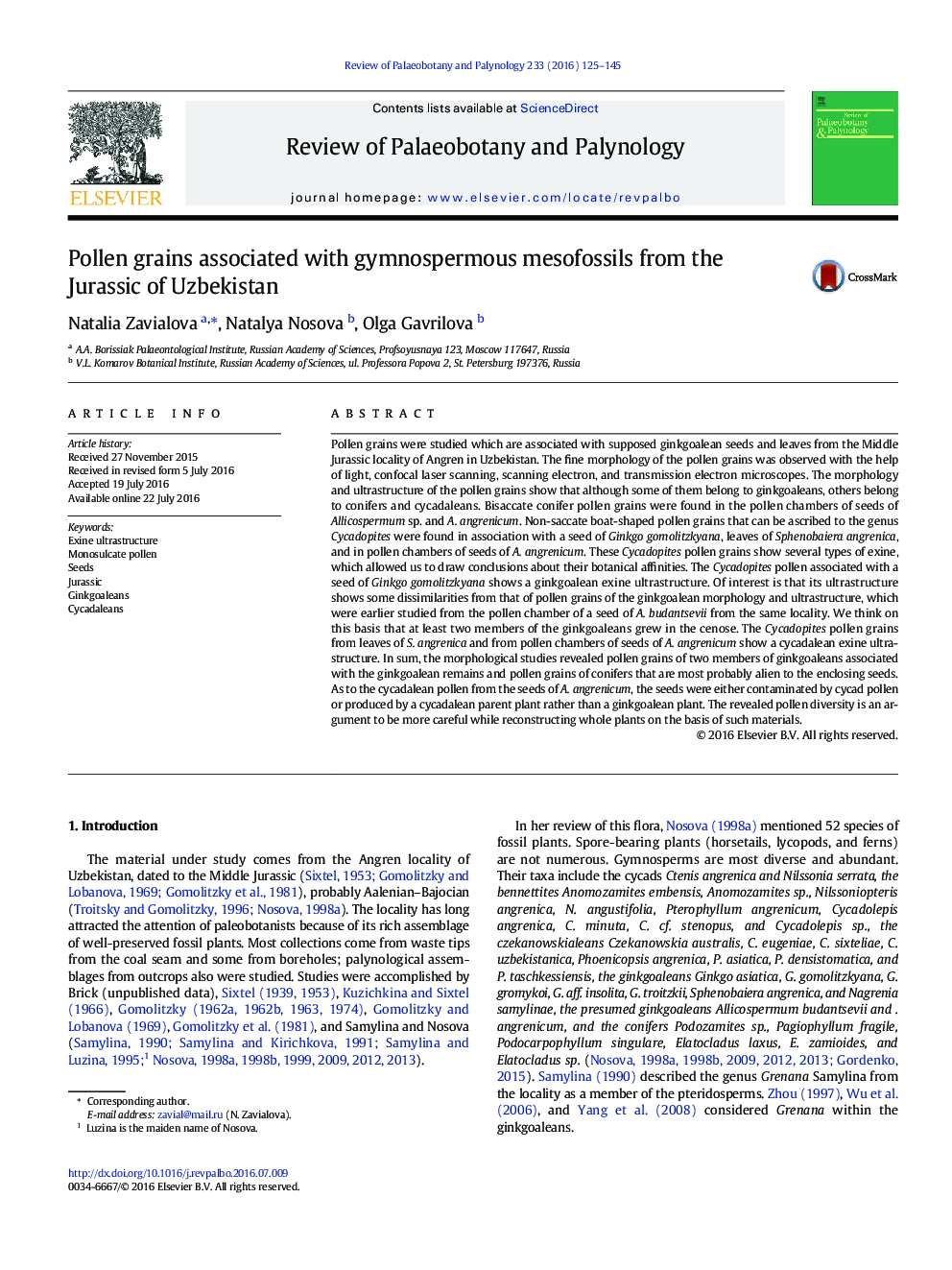| Article ID | Journal | Published Year | Pages | File Type |
|---|---|---|---|---|
| 4750049 | Review of Palaeobotany and Palynology | 2016 | 21 Pages |
•Pollen grains were found in association with Jurassic seeds and leaves.•They were studied with LM, CLSM, SEM, and TEM.•Their fine morphology testifies to conifer, ginkgoalean, and cycadalean affinities.
Pollen grains were studied which are associated with supposed ginkgoalean seeds and leaves from the Middle Jurassic locality of Angren in Uzbekistan. The fine morphology of the pollen grains was observed with the help of light, confocal laser scanning, scanning electron, and transmission electron microscopes. The morphology and ultrastructure of the pollen grains show that although some of them belong to ginkgoaleans, others belong to conifers and cycadaleans. Bisaccate conifer pollen grains were found in the pollen chambers of seeds of Allicospermum sp. and A. angrenicum. Non-saccate boat-shaped pollen grains that can be ascribed to the genus Cycadopites were found in association with a seed of Ginkgo gomolitzkyana, leaves of Sphenobaiera angrenica, and in pollen chambers of seeds of A. angrenicum. These Cycadopites pollen grains show several types of exine, which allowed us to draw conclusions about their botanical affinities. The Cycadopites pollen associated with a seed of Ginkgo gomolitzkyana shows a ginkgoalean exine ultrastructure. Of interest is that its ultrastructure shows some dissimilarities from that of pollen grains of the ginkgoalean morphology and ultrastructure, which were earlier studied from the pollen chamber of a seed of A. budantsevii from the same locality. We think on this basis that at least two members of the ginkgoaleans grew in the cenose. The Cycadopites pollen grains from leaves of S. angrenica and from pollen chambers of seeds of A. angrenicum show a cycadalean exine ultrastructure. In sum, the morphological studies revealed pollen grains of two members of ginkgoaleans associated with the ginkgoalean remains and pollen grains of conifers that are most probably alien to the enclosing seeds. As to the cycadalean pollen from the seeds of A. angrenicum, the seeds were either contaminated by cycad pollen or produced by a cycadalean parent plant rather than a ginkgoalean plant. The revealed pollen diversity is an argument to be more careful while reconstructing whole plants on the basis of such materials.
